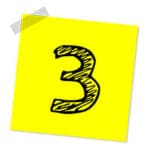The current coronavirus pandemic has definitely reshaped how society conducts business. Every industry, from retail to the education sector, now sees the importance of digital platforms in reaching their target audience.
As a business owner, it’s now become necessary for you to meet consumers online. This is particularly true in today’s health crisis. Because people are encouraged to stay indoors to limit the movement of the virus. You have to accelerate the digital transformation of your business.
According to Daniel Cooper, founder of Lolly Co, companies are in no position to ignore the digital space as “the divide between the forward thinkers and the technology laggards widens at speed.” He added that it’s up to business owners whether they’ll embrace and maximize technology to their advantage or continue to ignore its significance.
To give you an idea of what to do for your business, here are a few ways that companies are transforming their strategies digitally in the wake of the coronavirus health crisis:
E-Commerce

In recent years, e-commerce has risen to popularity with the creation of platforms like Amazon and eBay. Online shopping has now become the new norm, considering the fact that people have to stay inside their houses.
Most brands have already created websites where they can promote their products and services digitally. If you haven’t developed an e-commerce site for your merchandise yet, now is the best time to start.
Of course, it’s not just about building a website and leaving it for your target audience to discover. You have to be deliberate in the demographic that you want to reach. This is where digital marketing becomes valuable.
Digital marketing allows your brand to increase its visibility to potential customers. Most consumers are tethered to their smartphones nowadays. During their free time, they’re scrolling through their news feeds or typing various queries on search engines.
You can take advantage of this phenomenon by employing digital marketing strategies to build your online presence. Here are some tips to boost traffic and sales for your e-commerce site:
Recommended for you: Lead Generation for Small Business Owners During Coronavirus Outbreak.
1. Market to People Already in Your Site

Upselling continues to be a powerful tool to drive up sales. For your e-commerce website, you can post the premium versions of products that the customer is viewing so that they’ll be notified if they want something with more features.
2. Take Advantage of Instagram

You can also reach your target audience through social media, particularly Instagram. The platform has a feature that allows shops to post pictures of their products and tag the price right on the item. Once a user clicks on the tags, they are redirected to your e-commerce site to complete the purchase.
3. Enhance Your Email Marketing Campaign

Email is, still, a viable channel for generating repeat customers. You can email buyers who abandoned their carts or remind them that the products on their wish list are on sale. It increases the chances that they’ll complete the purchase.
4. Be Meticulous About Product Descriptions

Your descriptions should be detailed enough to give buyers an idea of the products’ specifications, as well as how these can help solve their problems. Moreover, make sure that you incorporate the right keywords to help with search engine optimization (SEO), but be mindful of overdoing it as your site might be tagged as spammy.
5. Focus on Consumer Experience

Usability is a crucial factor in any website, especially for your e-commerce site. You want a platform that’s easy for buyers to explore, so have an intuitive layout for the navigation. Think about the features and functions that would make shopping more convenient for potential customers to increase your sales.
Working from Home

Another digital transformation that companies are pressed to do during this pandemic is to restructure their processes to facilitate their employees’ work-from-home setup. Cloud technology is particularly useful for this arrangement since it makes collaboration more straightforward.
This pandemic may have shown you the areas that you need to improve to allow your team to work from home without affecting the quality of your operations. Research on the tools that can help you and your staff ease into this setup to future-proof your business.
Working from home can help reduce your overhead costs. If done right, you won’t need to rent an office and pay for electricity, as well as other utilities. Of course, not all industries are suitable for remote work. Nonetheless, you should think about the tasks that your employees can do remotely and weigh the advantages and disadvantages of going down that road.
The following are some tools you need to prepare your employees for a seamless transition from working in the office to their homes:
You may like: What is C-SCRM and Why would You Need it in Your Business?
1. Communication Apps

You must invest in dedicated chat and video conferencing apps for businesses, especially if you have more than 50 employees in your team. You need to ensure that communication won’t be hampered even when everyone is working in different places and even time zones.
2. File Storage Tools

While most file storage apps are meticulous about data security, you should also consider other factors, such as speed, storage size, and file sharing. Cloud technology has made these types of tools more convenient for sending and receiving files of all sizes.
3. Project Management Software

If you’re worried about your team’s productivity when working remotely, you should choose the best project management software for your company. This digital tool makes collaboration among employees more effortless while allowing you to monitor their progress without micromanaging them.
Virtual Events

“2020 became known as the year of the virtual event and webinars. If you can take anything from this year, virtual events are here to stay!” – as mentioned by Justin Man, the Content Coordinator at Remo, in one of his recent blog posts.
It’s not only meetings that have become digital. Industry-wide conferences have also shifted from in-person to virtual events. It still stays true to the overarching goal of sharing ideas, starting discourses on developments in your niche, and networking with people in the same field, but it’s all electronic.
Video and networking apps are the software programs that you need if you’re planning to host a virtual event. The former, obviously, is used to broadcast your message to your consumers. Meanwhile, the latter is valuable for connecting viewers to each other.
These days, popular live streaming options include YouTube Live and Facebook Livestream. This is because you can reach a lot of consumers through these platforms.
On the other hand, you can use professional networking apps, like LinkedIn and Bizzabo, which you can integrate into your virtual events. These allow you to connect with the people who joined your events, and, at the same time, they can link with others in the same industry.
You should put a lot of thought into the format of your virtual events. You have to consider your target audience. Consumers in their 40s or 50s may be fine with watching one person speak about your products and services, similar to a conference. However, this might not work with younger clients, so you need to utilize various media to create a unique experience.
Insight-Driven Approach

With the average consumer being bombarded with thousands of ads in a day online, it has become essential for brands to be specific when it comes to targeting potential customers. It’s no longer just about knowing the age and gender of your prospects; now, it also has to do with analyzing consumer behavior in-depth.
It’s not enough for you to just determine how many people visited your website and what they bought. You also have to analyze their browsing patterns. Looking into the details can help you develop strategies that will work for your company and target audience specifically.
For instance, knowing the search interests and shopping behavior of your consumers will enable you to create a more robust product recommendation algorithm. This can boost sales by offering customers viable alternatives if the merchandise that they’re looking for is temporarily unavailable.
Remote Learning

Education is also a sector that has felt the significant impact of COVID-19. It might be impossible to return to the days when children could sit together in one classroom without worrying too much about diseases.
Similar to the business world, learning tasks and processes are also being conducted remotely. A possible issue that may come up is that both schools and students may not have the proper technology and tools to maximize online classes. This might be because the institutions were caught unprepared for the pandemic. Nonetheless, this forced shift will definitely reshape and improve the way classes are conducted in the future.
You may also like: 7 Reasons to Why Do You Really Need A Website for Small Business.
Conclusion

The coronavirus pandemic has changed the way people do business. Online shopping is currently dominating the market, and you should ride the tide by creating an e-commerce website for your brand. It’s a crucial tool for reaching your target demographic and, ultimately, increase sales for your company.
Inside your company, you may also need to restructure your processes and have your employees work from home to limit the risk of contracting COVID-19. With this, you must invest in tools to ensure that your operations won’t be hampered by the transition.
Fortunately, most tasks, even events, and classes, can be done remotely, thanks to the digital tools and platforms that have been developed. As a business owner, it’s time to embrace technology and maximize it for your company.





